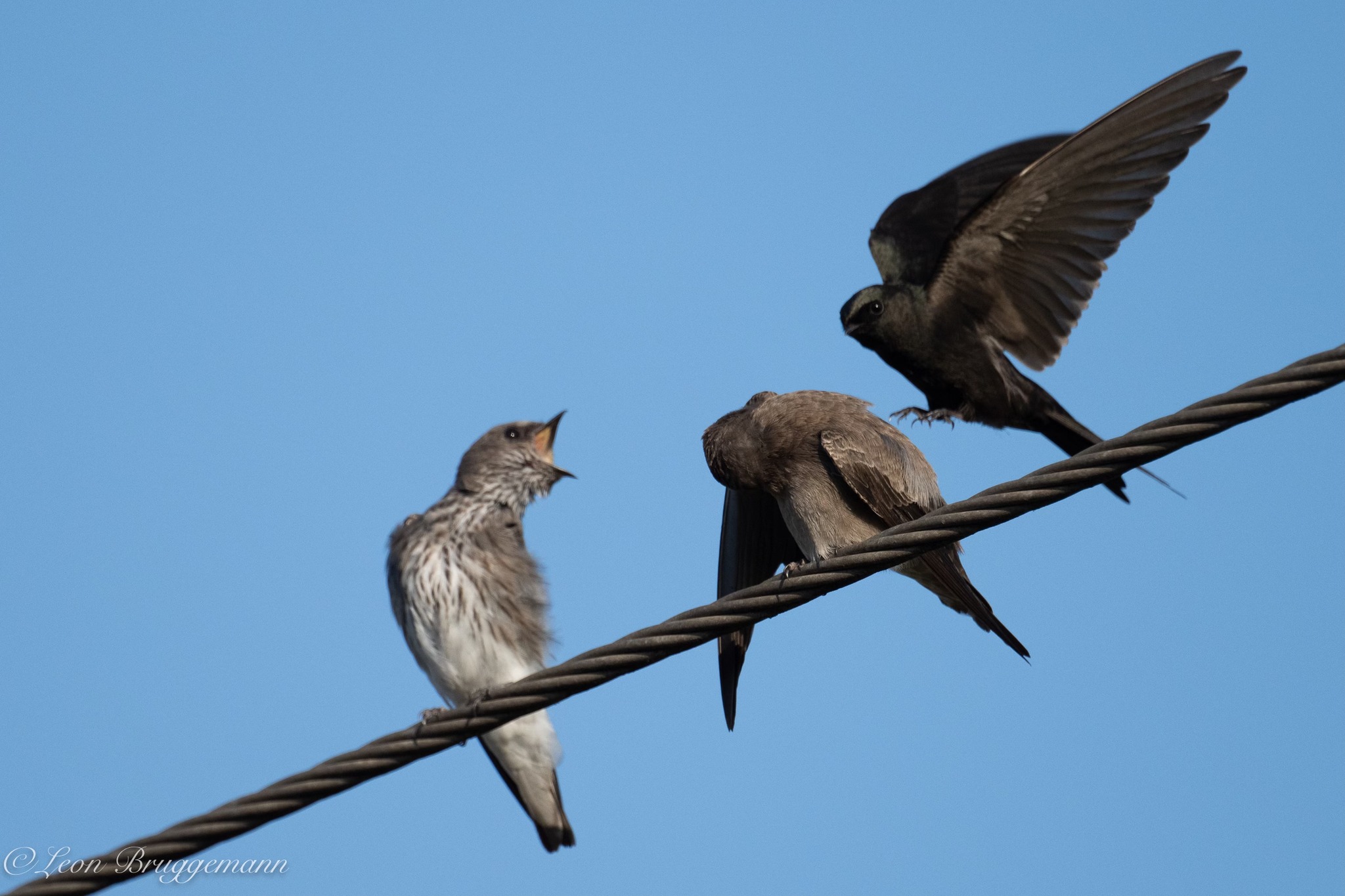Picture the scene: At least 15 excited bird-watchers are huddled beneath a power line in the sugarcane fields near Durban’s King Shaka International Airport, cameras and binoculars at the ready.
They have travelled here from around KwaZulu-Natal to see a very rare but rather small brown bird (a vagrant Mascarene martin) that has only been sighted officially in South Africa once before.
A once-in-a-lifetime opportunity.
And then… Wham!
The bird glances around, drops from its perch and is snatched for supper by a predatory lanner falcon.
 The vagrant martin photograhed in flight the day before the great snatch. (Photo: Leon Bruggemann)
The vagrant martin photograhed in flight the day before the great snatch. (Photo: Leon Bruggemann)
Gerhard van Rooyen, who managed to grab a fleeting image of the falcon cruising away with the martin firmly grasped in its talons, believes most of his fellow bird watchers were too shell-shocked to zoom in fast enough to capture the drama on camera.
He recalls hearing a group of hadedas screeching loudly just beforehand, “but the poor little fellow didn’t heed the alarm call until it was too late”.
https://www.youtube.com/watch?v=eGBZT1gI9lo
Van Rooyen, who follows a rare bird sightings chat group, was on his way home to Ladysmith from a camping holiday at Lake St Lucia when he decided to take a “quick detour” through the cane fields at Mount Moreland to see if they could spot the rare martin. It was late in the afternoon on Monday, 17 June.
“We still had a long, five-hour drive ahead of us to get home but I managed to persuade my family to take a chance and make a trip into the cane fields.”
 Margate vet Leon Bruggemann captured this close-up image of the hapless bird on 16 June. (Photo: Leon Bruggemann)
Margate vet Leon Bruggemann captured this close-up image of the hapless bird on 16 June. (Photo: Leon Bruggemann)
 The lanner falcon flies off, with supper held in its talons. (Photo: Gerhard van Rooyen)
The lanner falcon flies off, with supper held in its talons. (Photo: Gerhard van Rooyen)
 The lanner falcon flies off with supper held in its talons. (Photo: Gerhard van Rooyen)
The lanner falcon flies off with supper held in its talons. (Photo: Gerhard van Rooyen)
They arrived 10 minutes before the falcon struck.
Hennie Jordaan, from New Germany, captured a video and sound clip of the vagrant martin’s final moments as it sat quietly on a power line – along with the warning calls of the hadedas and the horrified gasps of fellow birders as the falcon swooped in low.
“Some of the other small birds scattered, but the martin just sat there, looking around anxiously. Suddenly it tried to get away but the lanner readjusted its attack angle very fast and took him out. You could hear the wallop.”
Jordaan said the presence of the rare bird had been known for about a week on local bird forums. While he had been planning to visit Mount Moreland at the weekend, he delayed the trip till Monday afternoon so that his son could join him and add the martin to his list of 603 types of birds spotted in KZN.
“This was only the second time that this bird had ever been seen officially in South Africa and we did not want to miss it.”
Dr Leon Bruggemann, a vet from Margate on the South Coast, also grabbed the rare opportunity to see and photograph the martin the day before.
“Roberts Birds book mentions only one record in northern Kruger Park; however, there is an unofficial record of a sighting in Phinda many years ago. Thus, for a normal hobby birder, this species is an extremely rare vagrant, almost impossible to get to see in South Africa.
“As a result, this particular individual became famous very quickly, and many avid birders travelled from far away to try to find it. The bird was pretty cooperative, and there were almost daily reports of people having seen it in the same place.
“We left home early, arrived on the spot shortly after 7.30am, with about 20 other birders already there, and my Father’s Day gift arrived in the form of our target bird about five minutes later. Success! The bird entertained us for over an hour, interacting with other common martins, saw-wings and swallows, and eventually flew off.
“I guess I was just very lucky to be able to get to the right spot and find that one small brown bird amongst many other small brown birds.”
Durban ornithologist David Allan said it was possible that the martin, a member of the swallow family that breeds in the Mascarene Islands near Mauritius, was a young and inexperienced bird, blown off course during its first migration.
“It’s kind of unfortunate that this happened – but that’s nature I suppose.” DM
https://www.youtube.com/watch?v=REeWvTRUpMk




 The lanner falcon flies off with supper held in its talons. (Photo: Gerhard van Rooyen)
The lanner falcon flies off with supper held in its talons. (Photo: Gerhard van Rooyen)